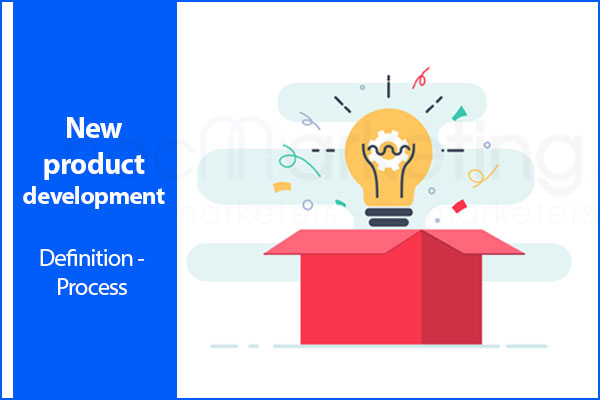
The Power of Consistent Innovation in Leveraging Distinctive Assets

Exploring the boundaries of creatively leveraging and expanding your unique assets is essential for their integration, but where do we draw the line on pushing these limits?
Embedding a distinctive asset or brand code requires a number of elements, some of which are within a marketer’s influence, but others are not.
Time is something that belongs to the second group. Assets need time to become established, and even the most powerful CMO cannot speed up this process.
Reach (and frequency) is a factor that can be influenced by the brand. It is determined by the amount of money spent on paid media, the effectiveness of earned media, and how effectively the brand utilizes its own media through various touchpoints such as packaging, app icons, storefronts, and even delivery personnel.
Prioritization and consistency are two key factors that play a crucial role in the performance of distinctive assets controlled by marketers. By being consistently focused on just a few assets, a unique brand can be created. The type of asset also plays a significant role, with some types such as characters or jingles performing better than others. Strong distinctive assets often have an element of incongruity in their DNA, giving them a competitive advantage.
Creativity is the final piece of the puzzle. The way a brand utilizes its distinctive assets and the level of creativity involved can greatly impact the performance of the assets in terms of distinctiveness. While all brands have the opportunity to experiment with their brand codes, the extent to which they can be modified depends on how deeply ingrained they are in the brand's identity.
A recent column by Mark Ritson discussing a collaboration between two well-known brands got me thinking. I am the co-founder and head of strategy at Distinctive BAT, a consultancy specializing in distinctive asset research and tracking. The column addresses common questions that arise during Distinctive Brand Asset research.
Can we develop a different version of the character? Is the packaging design flexible enough for us to experiment with colors? Have we established our advertising style enough to make modifications? Is it possible to decrease the size of the logo to highlight other elements?
Ritson supports the idea of experimenting with brand codes, but he also warns against going too far if the brand identity is not well-established.
He emphasizes the importance of having a strong, consistent brand identity before making any changes. Once a brand has established its signature, salience, centrality, and familiarity, it can consider making adjustments. However, he cautions that a brand that has been consistent for a long time may also seem outdated.
It's important to know when to use your knowledge to adjust your brand's image. Sometimes, it's okay to break the rules and have some fun with your brand codes. While it's good to make things clear and straightforward, it's also okay to be a bit playful at times.
If your brand isn't quite where you want it to be, focus on the basics first. Make sure you're doing everything well and consistently across all platforms. Put in the effort and be strict with how you apply your brand's guidelines.
To determine how much an asset can be flexed and stretched, the key is to rely on data. By quantifying asset performance using various metrics from brand asset research, we can understand the potential of each asset. These asset scores can then be visualized on an asset grid, a tool introduced by Jenni Romaniuk and the Ehrenberg-Bass Institute.
In simple terms, if an asset falls into the top box quadrant of the grid where at least 50% of people can recognize it and correctly attribute it to the brand, there is more room to explore its possibilities. It's important to note that this assessment is based on a sample of light category buyers. If an asset is only popular among category enthusiasts, such as motorheads, whiskey geeks, or fitness fanatics, it may not have the wide appeal needed for successful branding efforts.
Guidance overview using a distinctive asset grid, first created by Jenni Romaniuk & the EBI.
Crocs, for example, has a product shape that is easily recognizable and beloved by many buyers in the market. This distinctive shape can be considered a key asset for the brand.
The brand effectively utilizes this unique shape in its advertising strategies. Instead of solely focusing on the shoe itself, Crocs incorporates this shape in playful ways to engage consumers. By leaving room for imagination, consumers are drawn to the brand and the shape becomes even more iconic. Just like the saying goes, "In baiting a mouse trap with cheese, always leave room for the mouse."
When distinctive assets start nudging their way towards the ‘iconic asset’ mark in the top right corner, the ability to play and stretch the asset grows.
Aldi has effectively utilized its Kevin the Carrot character, especially in its Christmas ads. Kevin is a popular figure, allowing Aldi to expand his role by dressing him up in various outfits and introducing new family members. These characters have even been turned into collectible stuffed toys that fans can own.
Aldi has the ability to use him outside of Christmas as well, due to his strong presence. They have even begun incorporating him into other areas, such as the brand’s Irish Rugby sponsorship activation.
However, this does not mean that the established rules can be disregarded.
Playing around too much with certain assets can actually confuse consumers and affect their memory of a brand. For example, we looked into the trend of debranding by testing the new and old logos of Peugeot. The results showed that the new logo, which had undergone significant changes, scored much lower in recognition compared to the old one.
This highlights the importance of not straying too far from familiar brand elements in advertising. If a key asset is altered too drastically, consumers might not make the connection with your brand, potentially missing out on the intended message.
Another common issue arises when brands introduce new versions of an asset too early or too frequently, before it has a chance to become familiar. This is particularly noticeable with characters, where new family members are constantly being added or the asset is altered so much that it becomes unrecognizable. This often happens when characters are used on packaging, with a different version of the character "family" being used for each product. Even if the art style is similar, this dilutes the brand too much and makes it hard for consumers to recognize the assets.
Icon status
Some assets are so well-known that they don't need an introduction. These are the iconic brand assets that are instantly recognized by the majority of category buyers, with around 85% or more being able to associate them with the brand.
These assets can stand out as a strong branding tool even without the brand name being prominently displayed. They can be easily adjusted, expanded, and experimented with without much risk. In fact, changing or enhancing an iconic brand asset can help reinforce brand recognition.
The new British Airways campaign by Uncommon has sparked discussions in the marketing industry for its simplicity, with no clear call to action or full logo visible. Despite this, thanks to the recognition of elements like color and font, along with subtle hints of the brand name, most consumers in the UK can still easily connect it back to the correct brand.
Specsavers has the freedom to get creative with its tagline and platform, 'Should Have Gone To Specsavers'. One recent stunt they pulled off got a lot of buzz on social media.
The tagline of Specsavers instantly came to mind when news and social feeds showed their van stuck on a bollard. Even though the tagline was not visible, it caused confusion about whether it was real or fake, leading to more people sharing the news. If the brand had left a sign with the tagline, it might not have gotten as much attention.
On the other hand, Guinness is known for effectively using the shape and color of the pint in their attention-grabbing advertisements. The pint is a simple yet versatile tool that plays a key role in the brand's success.
Source: Diageo
If your brand has reached iconic status, you have a unique advantage in creatively using and expanding the asset for maximum impact. The strong asset can be further enhanced through playful experimentation.
If your brand is in this position, consider yourself fortunate. You are benefiting from the groundwork laid by your brand team in the past.
If your brand is not quite where you want it to be, you need to start by mastering the basics, being consistent, and applying yourself rigorously. Creativity is essential, but having clear guidelines and focusing on your unique assets will help you and your agency produce amazing results.
Cathal Gillen is the Co-Founder and Head of Strategy at Distinctive BAT, a consulting company that focuses on researching and tracking distinctive brand assets.
Editor's P/S:
The article delves into the multifaceted nature of distinctive brand assets and the interplay between various factors that influence their performance. It highlights the crucial role of time, reach, consistency, and creativity in establishing and leveraging these assets. The author emphasizes the importance of relying on data to assess the potential of an asset and the need for a balanced approach when experimenting with brand codes.
Moreover, the article discusses the concept of iconic brand assets that transcend mere recognition and become deeply ingrained in the minds of consumers. These assets offer brands greater flexibility and creative freedom, allowing for innovative and impactful marketing campaigns. However, the author cautions against altering iconic assets too drastically, as this can erode their familiarity and hinder their effectiveness. By understanding the dynamics of distinctive brand assets and leveraging them strategically, businesses can enhance their brand identity, build stronger connections with consumers, and achieve greater marketing success.













